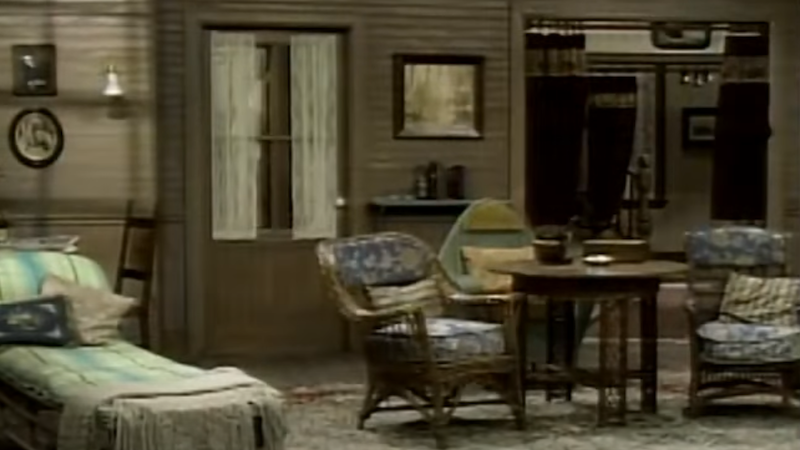The Strange Appeal of Eugene O’Neill
Tales from the small screen

Writer and old movie buff Candace Arthuria examines a 1982 TV version of “Long Day’s Journey into Night.” The classic film is tragic yet moving, and the playwright’s talent shines in the darkness, contributing to the appeal of Eugene O’Neill.
Whenever I sit down at my laptop, I aspire towards my best-of-times-worst-of-times moment. The one that makes the reader say, “Wow,” or would have inspired Charles Dickens to coin a 19th-century British vernacular version of “You go, girl.” The closest I ever came was, “The bride was ninety-seven, the groom nineteen.” That’s the opening to my short fiction, “Mr. and Mrs. Mancini.”
Most of us will never achieve the one-liner that lives in perpetuity. But a few of us will. There are stories so exquisitely woven that you just can’t believe the author could have been so blessed with the enormous talent to create them.
This morning, I checked the schedule for Turner Classic Movies, as I do every day. And whaddayouknow, the moment I’ve been waiting for. At 5:15 pm, the network will air “Long Day’s Journey Into Night,” Eugene O’Neill’s autobiographical gem. I have seen this version only once and waited 30 years to see it again. My excitement compels me to stop what I’m doing and take a stab at writing this piece. I’m supposed to be headed for Bible class, but I just can’t tear myself away.
If you like, you can search AI for O’Neill’s family history, endless interpretations of dysfunction, or philosophical theses on the tenuous line between love and hate. But for those who haven’t read or seen the play, that will ruin the meticulous unveiling of hellish tribulations that are artfully disclosed in slow-motion layers. The ever-present fog is a translucent conduit to troubles and secrets unseen by the naked eye. The persistent and ominous foghorn reinforces the somber tone. Eugene O’Neill was a master of his craft.
The uniqueness of this adaptation is the courageous, unorthodox casting – Ruby Dee, Earle Hyman, Thommie Blackwell, and Peter Francis James. Were there prosperous colored people in 1912 New England? If you were to listen to an audio recording of this version of the play, you would never guess who’s talking. Kudos to director William Woodman for leaving the dialect intact. This was not a mere oversight. It was a director’s show of faith that the actors were up to the challenge. Woodman’s rendition is a bold representation of a masterpiece penned by the globally recognized greatest American playwright. And his cast rose to the occasion.
Ruby Dee’s character is a failed wife and mother with a secret that hides in plain sight. We sense that something is wrong early on, but can’t figure out what it is. She skulks around the house like a ghost haunting herself while her husband and two sons argue about the reason. Her strange behavior is compounded by delusion, as she holds her husband responsible for everything wrong in her life and grieves the perfect father who never was. Her lost opportunity to become a nun is a notion her husband dismisses as fantastical and absurd. What does it say about a marriage when a wife lusts after a convent?
The husband, a miser, is loathed by his wife and children. But as the tragedy unfolds, we understand that his trauma runs deeper than the pockets of his trousers. He does his best to rule the roost amidst the chaos, losing himself behind an erudite facade. While his thespian airs are on full display, his glory days on stage are but a shadow. He demands the same pretense of his youngest son, an over-educated sailor who writes poetry while dying of TB. Edmund does not wish to be a sailor. He wants to be Eugene O’Neill.
Nevertheless, he has another role to play. He must embrace his mother’s denial of his illness, as his father searches for the cheapest sanatorium.
Allegedly, the elder son is an actor. Like his father, he is an alcoholic. Unlike his father, he doesn’t pretend to be anything else. His life is consumed by brothels and booze. Though all three men are well-versed in poetry and prose, they articulate their suffering through recriminating outbursts. Dark scenes disclose regret, resentment, and a particularly peculiar hybrid of love and hate. There is no refuge in a house inhabited by tortured souls who take in air, but never breathe. Yet, the audience hangs on, hoping for a shred of resolution. It never comes. Such was the early life of the playwright.
In the final scene, Ruby Dee delivers a doleful, yet powerful soliloquy. Tired of pretending, her character surrenders all hope. The others are complicit by their silence. I am hard-pressed to justify why anyone should listen to me and watch this or any other tragedy. My only explanation is that artists paint and draw in many colors, including black. Did O’Neill expose his pain to the world to satisfy the curious? I doubt that seriously. Perhaps he empathized with husbands, wives, daughters, and sons trapped in similar conditions. Many have taken their lives for lesser reasons. Is it possible he bared his soul so others might know that he survived TB? Could the message be – talk it out, don’t give up, fight with everything you’ve got? I do not pretend to know the mind of a literary genius, but I recognize excellence when I see it.
Thank you, TCM, for keeping great cinema alive.
Candace Arthuria is an independent writer and editor. She is the recipient of a 2024 New Jersey State Council on the Arts Finalist award. You may ignore any photos you see. Not one of them is the writer. And if you don’t see Arthuria, you are reading the wrong Candace.
More like “The Strange Appeal of Eugene O’Neill” from Candace Arthuria
Movie Night with Grandma
Old Movies: Stimuli of the Mind


